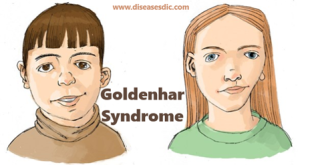Definition
Ptosis is when the upper eyelid droops over the eye. The eyelid may droop just a little, or so much that it covers the pupil (the black dot at the center of your eye that lets light in). It can limit or even completely block normal vision. Children and adults can have ptosis. Fortunately, this condition can be treated to improve vision as well as appearance.
Ptosis
Types of Ptosis
Congenital Ptosis
Congenital ptosis is present at birth, but may not be diagnosed until childhood, when it becomes more noticeable. It occurs when the levator muscle, which is responsible for lifting the eyelid, fails to develop properly in the womb. Congenital ptosis compromises the top part of the field of vision, and to compensate, children with this condition often tilt their heads back in order to see clearly.
Congenital ptosis
Untreated congenital ptosis can lead to other visual disorders including a condition called amblyopia, commonly known as “lazy eye.”
Acquired Ptosis
This type can exist in several forms.
Mechanical ptosis occurs when the eyelid is weighed down, either by excessive skin or a tissue mass.
Aponeurotic ptosis occurs when the eyelid’s levator muscle stretches out. This is usually due to the aging process, but can also happen because of excessive eye rubbing or eyelid pulling.
Neurogenic ptosis is due to a problem with the nerve pathways that control eyelid muscle movement. These problems include Horner syndrome, third nerve palsy and myasthenia gravis.
Traumatic ptosis happens when the eyelid sustains an injury or trauma that affects the levator muscle.
Risk factors
Children who have ptosis may also develop amblyopia, commonly known as lazy eye. This disorder can also delay or limit their vision.
Causes of Ptosis
- You can get it several ways. Sometimes, babies are born with it.
- You could get ptosis as an adult when the nerves that control your eyelid muscles are damaged. It might follow an injury or disease that weakens the muscles and ligaments that raise your eyelids.
- Sometimes, it comes with age. The skin and muscles around your eyes get weaker. Surgery like LASIK or cataract surgery can stretch your eyelid. An eye tumor can cause ptosis, too.
Ptosis symptoms
- The main symptom of eyelid drooping is that one or both eyelids sag. In some cases, this can affect your vision. However, many people find that the eyelid sagging is barely noticeable or doesn’t happen all the time. You may also have extremely dry or watery eyes, and you may notice that your face looks weary or tired.
- The main problematic areas will be around the eyes, and you may experience aching, which can also cause you to look tired. Some patients who have a severe case have to tilt their heads back at all times when speaking, even when holding a normal conversation.
- A doctor should investigate persistent eyelid drooping to make sure there are no underlying conditions. This is especially important if you notice that migraine headaches or other issues have shown up since you first noticed the drooping.
Diagnosis and test
A physical examination will be done to determine the cause.
Tests that may be performed include:
- Slit-lamp examination
- Tension test for myasthenia gravis
- Visual field testing
Treatment and medications
- If it doesn’t affect your vision, your doctor may decide not to treat it.
- Often, doctors won’t treat children with ptosis. Your child’s doctor will check his eyes regularly. He’ll probably treat amblyopia with drops, patches, or glasses. And he’ll watch the eye to see if your child needs surgery as he gets older.
- For adults, treatment usually does mean surgery. Your doctor may remove extra skin and tuck the muscle that lifts the lid. Or he may reattach and strengthen that muscle.
- You may also be able to wear glasses with a special crutch built in. It lifts your eyelids so you can see better. That helps you avoid surgery.
Long term outlook
The underlying cause of ptosis plays a major role in determining the outlook for people with this condition. Surgery can be very successful in restoring vision, eye function, and the appearance of the eye.
Surgery carries the risk of:
- Scarring
- Asymmetry
- An abnormal lid crease
- Failure of the eyelid to close completely
Therefore, surgery is indicated only in cases of disabling ptosis.
Prevention of Ptosis
There is no way to prevent eyelid drooping. Just knowing the symptoms and getting a regular eye exam can help you fight the disorder. If you notice that your child seems to have a drooping eyelid, take them to the doctor right away to be treated and monitored. Since it can affect your vision, which can affect your driving ability and other activities, you should take it seriously. You may be able to stop it from getting worse by seeing a doctor right away.
 Diseases Treatments Dictionary This is complete solution to read all diseases treatments Which covers Prevention, Causes, Symptoms, Medical Terms, Drugs, Prescription, Natural Remedies with cures and Treatments. Most of the common diseases were listed in names, split with categories.
Diseases Treatments Dictionary This is complete solution to read all diseases treatments Which covers Prevention, Causes, Symptoms, Medical Terms, Drugs, Prescription, Natural Remedies with cures and Treatments. Most of the common diseases were listed in names, split with categories.








my eyes have a problem it’s 6 months now I tried treatment b
but no change I feel like sands or pollens in my eye a doctor told me that it’s eye dryness
Consult a good experienced ophthalmologist to get better treatment.
how can I treat
it
Consult doctor.
it’s too much doctor which drug can i use
Consult ophthalmologist.
there is coming from my eyes when light reflect on my eye
Please consult doctor.
near caruncle there is a problem to me
how can I treat??
Please consult a doctor.
i have also ptosis.but i don’t know is it from by birth or not .i hve migraine .can it became the cause of ptosis
Please consult a doctor.
I have myasthenia gravis I’m 55 years old I was diagnosed 4 years ago weakness all the time but it’s getting better I’m in remission now I guess I’m one of the lucky ones
thank God
I’m 55 years old 4 years ago I was diagnosed with myasthenia gravis, muscle weakness is the worst thing but I’m in remission now.
thank God